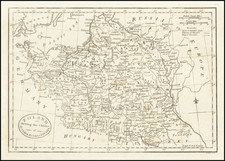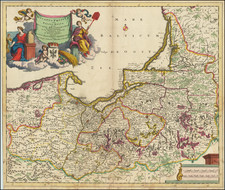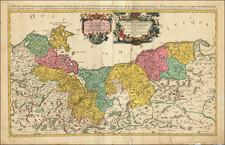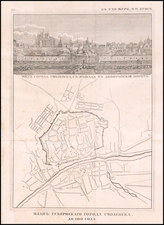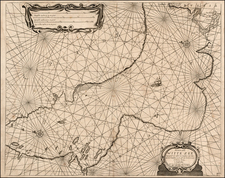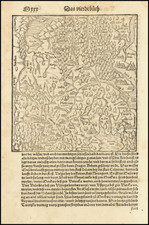Decorative full color example of the 1760 Desnos edition of De Fer's map of Poland, Lithania and the Ukraine.
The map is bounded by the Baltic, Moscovie, the Dniester and the Oder Rivers and extends to the Palatinat of Cracovia and Petit Tartaria on the Dniepr River. . Interesting detail throughout, including towns, wood, rivers, mountains, lakes, Duches and a host of to the details.
The coats of arms of Poland, Lithuania, Prussia, Curland and Russia are shown, along with a table of the Latitudes and Longitudes of the Principal cities in the region, Varsovie, Cracovie, Dantzick, Riga, Vienne, Stockholm, Vilna, Mitaw, Konigsberg, Leopol, Kaminiec, Bracklaw, Oczaskow, and Moscow.
The map was first issued by De Fer and engraved by Starckman in 1716. Several references note 2 states of the map, but we are aware of the 1716, 1760 and 1782 editions (the later also by Desnos). While the 1716 and 1782 editions have appeared at auction and in dealer catalogues in the past 20 years, this is the first example of the 1760 edition which we have seen offered for sale.
Nicholas de Fer (1646-1720) was the son of a map seller, Antoine de Fer, and grew to be one of the most well-known mapmakers in France in the seventeenth century. He was apprenticed at twelve years old to Louis Spirinx, an engraver. When his father died in 1673, Nicholas helped his mother run the business until 1687, when he became the sole proprietor.
His earliest known work is a map of the Canal of Languedoc in 1669, while some of his earliest engravings are in the revised edition of Methode pour Apprendre Facilement la Geographie (1685). In 1697, he published his first world atlas. Perhaps his most famous map is his wall map of America, published in 1698, with its celebrated beaver scene (engraved by Hendrick van Loon, designed by Nicolas Guerard). After his death in 1720, the business passed to his sons-in-law, Guillaume Danet and Jacques-Francois Benard.









